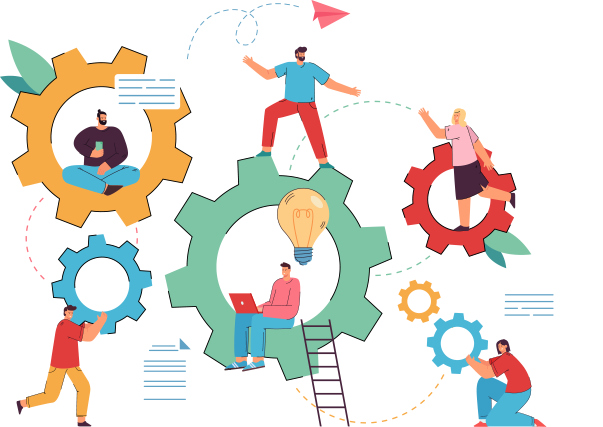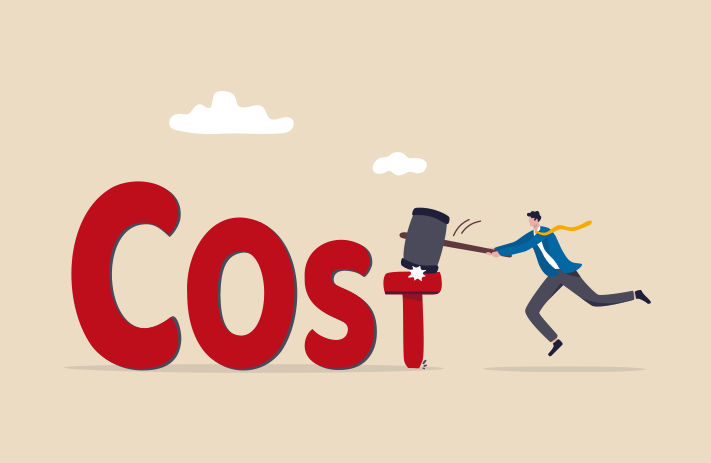
Click the button to start reading
5 Useful Collaboration Skills to Take Your Team to the Next Level
No one looked forward to presentations at school. It was embarrassing standing in front of the class trying to explain something you barely understood. The teacher’s eyes laser focussed on you, sweat dripping down your face while you pray for it to be over.
Team presentations were even worse. There’s always that one person who didn’t do the work and tries to make it up as they go. But team assignments and presentations can teach us very valuable lessons about collaboration. When one person doesn’t pull their weight, the whole team suffers.
When tasks are delegated properly and expectations clearly defined the whole team benefits. At work, good collaboration is even more important because poor teamwork can affect the bottom line. Teams that have excellent collaboration skills set a good example to the rest of the company and can lead to increased sales and productivity.
Let’s take a look at some valuable collaboration skills and how they fit into a team environment.
5 Collaboration Skills Every Team Needs
1. Self-Awareness
Understanding how you fit into the team is the first step to creating an environment where collaboration can thrive. Your past experiences are a big part of what you bring to the table. What are your strengths and weaknesses?
When discussing project deadlines you need to be realistic about timings. You need to understand your skills and abilities and how much work you’re capable of handling. Hubris will get in the way and can harm team efforts. Be honest with yourself and your coworkers.
Another thing to understand is that your perspective will be different from your teammate’s. It’s important to create an atmosphere where every member of the team is heard and questions can be asked if necessary.
Some people are critical thinkers and others are creative thinkers. It’s common for the two types to clash when it comes to new ideas. However, the team needs to be encouraged to examine all possibilities as open-mindedness is key to successful collaboration. If there is resistance from one member of the team let them speak their concerns and ask any questions they have.
2. Communication
Self-awareness is the basis for effective communication. If you can appreciate that people communicate differently then you’ll foster better collaboration. Some people naturally gravitate towards leading group discussions while others may be shy or nervous. While that’s not a bad thing, it can lead to only one opinion being heard.

Quiet people often have great ideas but if stronger personalities are stealing the limelight, they may not speak up. Sometimes they need to be nudged to take the floor and it’s important to give people space to talk without being interrupted. The team leader should mediate and intervene if someone is being talked over.
Having a social component at work can help the different types of people be identified. Leaders especially should know how their different team members like to communicate so they can get the best out of people.
There are three types of communication to be aware of:
Verbal communication: What you say and how you say it is very important for teams. If there are disagreements they should be handled with respect. Your words can hurt or offend, regardless of intention, so you need to be considerate with your words.
Written communication: Misunderstandings can stem from written communication because the intent is harder to grasp. Without non-verbal cues, a lot of the nuance is lost. Coworkers can interpret sarcasm as being rude, for example. Be mindful of what you’re writing and how it can be interrupted, especially with remote working.
Non-verbal communication: The way our body acts when we’re talking gives off non-verbal cues that can share our sentiment. Someone who is slouching or facing away from the conversation isn’t fully engaged. Your tone of voice can alter how people interpret what you’re saying is.

3. Group decision making
Making decisions as a group is crucial for maintaining a collaborative spirit. Ultimately delegation lies with the team leader but it’s beneficial to include the team in these decisions. By having your staff help to coordinate projects they will have a deeper understanding of everyone’s workload.
This helps to keep staff organized and focussed because they will be more aware of the impact they have on their colleagues. It’s also a great opportunity for peer learning as your people will be able to share experiences, tips, and shortcuts.
Leaders should encourage debate among team members in a constructive manner. Hold debates when discussing new ideas but avoid the conversation becoming personal. It’s a helpful collaborative tool to share perspectives and move ideas forward as a team.
4. Adaptability
If only every collaborative project could work out as planned and right on schedule. The brutal reality is that things can and will go wrong which is where your team’s collaborative muscles are really put to the test. Adapting to change is crucial. You can’t predict what could go wrong but you need to be able to react when it does.
A team member could fall ill, or part of the project takes longer than expected, or an unavoidable technical issue occurs. If your people are good at collaborating they will be able to take control of the situation, mind map potential solutions, and get to work on them.
Adaptability is something that comes with experience. The more your team collaborates the better they will get at responding to changes. When things go wrong they provide a valuable learning experience. Encourage your team to discuss what happened and what could be improved next time.
5. Feedback
Feedback plays an important role in professional growth. Peer-to-peer feedback is when your team can praise or criticize one another in a constructive way. Most feedback from this source is informal feedback and coworkers do this without realizing it. It’s sharing knowledge, or shortcuts, or advice.
Team members need to be able to provide this feedback to each other and a team leader should encourage it. Everyone benefits when knowledge is being shared. However, how people share feedback is important. If someone feels talked down to or targeted it can create a hostile work environment. The same can be said for excessive positive feedback.
Collaboration thrives when coworkers can share feedback with each other productively. Team members grow professionally and the next project will benefit from added insights. Team leaders should be wary of negative feedback that doesn’t provide value and help their people to rephrase things in a constructive way.

Conclusion
A team that works well together is a boon for any business. Coworkers who are in sync can bounce ideas off each other and keep projects moving smoothly. Teams that don’t gel well together can have a harder time meeting deadlines and creating solid work.
Collaboration is a soft skill but many elements can be taught. Every team leader should take the time to learn how each of their employees prefers to work. Observe and understand how to get the best out of everyone. Then when your team comes together for collaboration you can help to ensure project success.
















